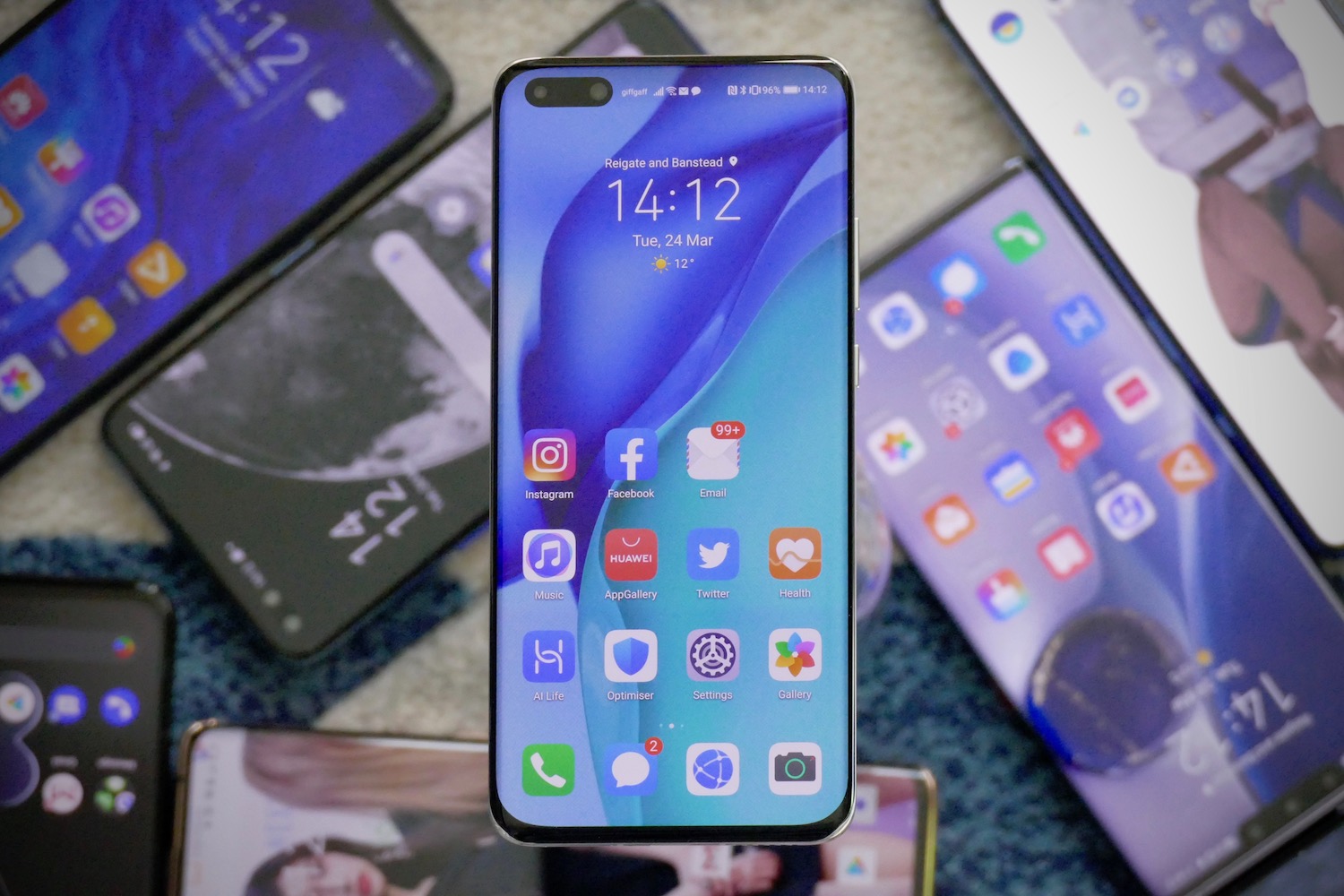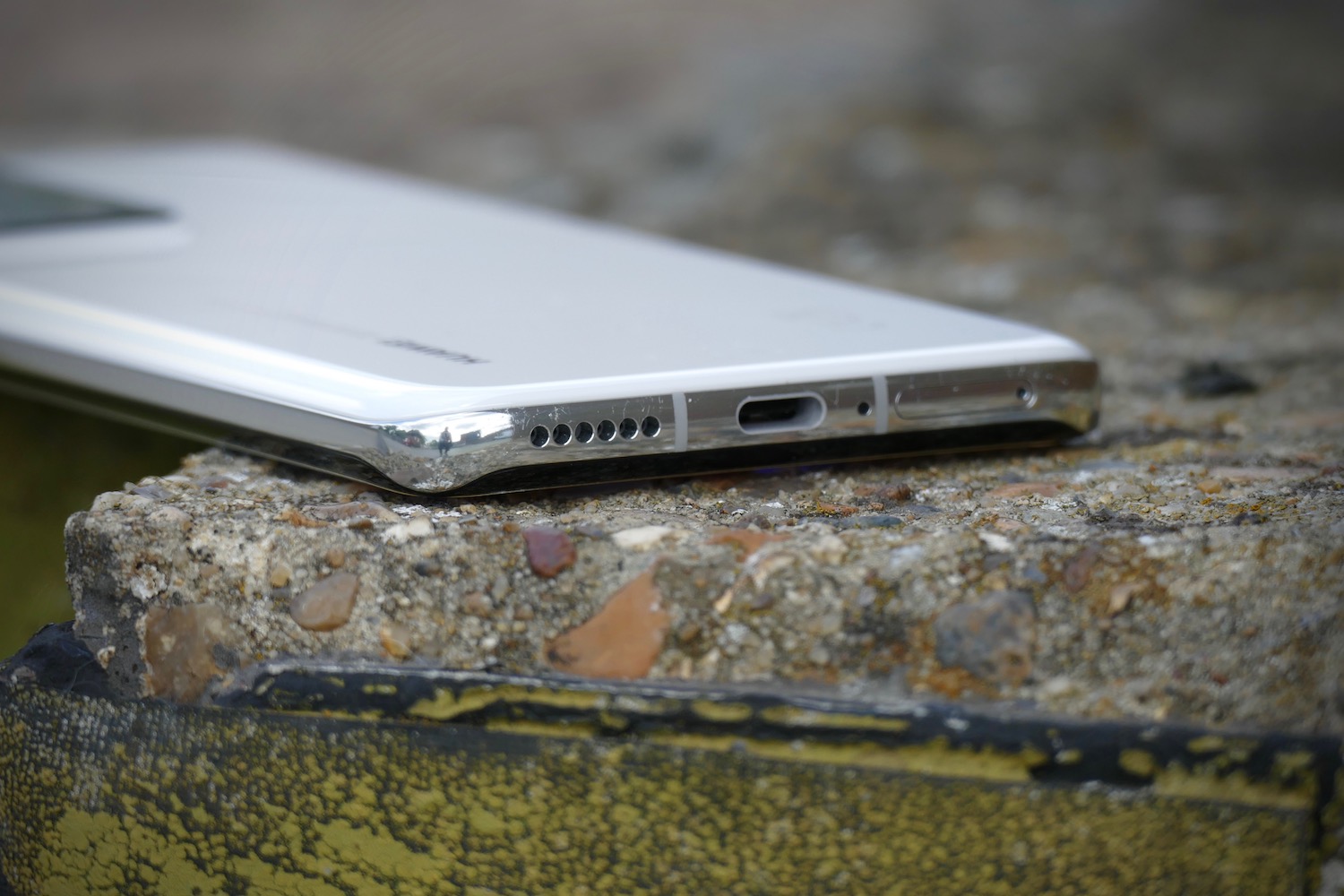The Huawei P40 Pro Plus has arrived, stealing the limelight from its stablemate, the Huawei P40 Pro. The P40 Pro has probably the best camera on a smartphone, but the P40 Pro Plus goes even further, adding a “SuperZoom” 8-megapixel periscope lens that gives your zoomed photos visibly better clarity and detail. On top of this, it adds an oven-baked ceramic rear case, making its reverse side more durable — and bulkier — than its less expensive stablemate.
However, aside from an even more powerful camera and a more luxury design, is the Huawei P40 Pro Plus really any better than than the Huawei P40 Pro? In this article, we test the two models to find out, comparing them across six categories: Design, camera, performance, software, special features, and price. Hopefully, this should help you work out which one is right for you.
Specs
| P40 Pro Plus | P40 Pro | |
| Size | 158.2 x 72.6 x 9 mm (6.23 x 2.86 x 0.35 in) | 158.2 x 72.6 x 8.95 mm (6.23 x 2.86 x 0.35 in) |
| Weight | 226 grams (7.97 oz) | 209 grams (7.37 oz) |
| Screen size | 6.47-inch OLED | 6.58-inch OLED, 90 Hz |
| Screen resolution | 2,640 x 1,200 pixels (441 pixels per inch) | 2,640 x 1,200 pixels (441 pixels per inch) |
| Operating system | EMUI 10.1 (Android 10) | EMUI 10.1 (Android 10) |
| Storage space | 256GB, 512GB | 128GB, 256GB, 512GB |
| MicroSD card slot | No, NM card | No, NM card |
| NFC | Yes | Yes |
| Processor | Kirin 990 5G | Kirin 990 5G |
| RAM | 8GB | 8GB |
| Camera | Ultra-wide 40-megapixel, standard 50-megapixel with OIS, 8-megapixel periscope telephoto, 8-megapixel telephoto, and 3D depth-sensing camera rear. 32-megapixel lens and depth sensor front |
Ultra-wide-angle 40-megapixel, standard 50-megapixel with OIS, 12-megapixel telephoto, and 3D depth-sensing camera rear. 32-megapixel lens and depth sensor front |
| Video | Up to 4K at 60 frames per second, 1080p at 960 fps super slo-mo, 720p at 7680 fps super slo-mo | Up to 4K at 60 frames per second, 1080p at 960 fps super slo-mo, 720p at 7680 fps super slo-mo |
| Bluetooth version | 5.1 | 5.1 |
| Ports | USB-C, 3.1 | USB-C, 3.1 |
| Fingerprint sensor | Yes, in-display | Yes, in-display |
| Water resistance | IP68 | IP68 |
| Battery | 4,200mAh
Huawei SuperCharge (40W) Fast wireless charging (40W) Reverse wireless charging (27W) |
4,200mAh
Huawei SuperCharge (40W) Fast wireless charging (27W) Reverse wireless charging (27W) |
| App marketplace | Huawei App Gallery | Huawei App Gallery |
| Network support | No official US support | No official US support |
| Colors | White Ceramic, Black Ceramic | Silver Frost, Blush Gold, Deep Sea Blue, Ice White, Black |
| Price | $1,645 | $1,100 |
| Buy from | Huawei | Huawei |
| Review score | Review in progress | 3.5 out of 5 stars |
Design, display, and durability

To be fair, casual observers would be hard-pressed to spot the difference between the Huawei P40 Pro and P40 Pro Plus. Both smartphones sport metal bodies with curved glass screens. That said, there are two main differences that quickly reveal themselves to the keen observer.
First, the Huawei P40 Pro Plus features a ceramic rear. It looks great, and given that Huawei has baked it in the oven for five days at around 1,500 degrees centigrade, it should be very durable. However, it’s also the reason why the P40 Pro Plus is about 17 grams heavier than the P40 Pro. In
Secondly, the camera bump on the P40 Pro Plus is noticeably larger than the P40 Pro’s, with the P40 Pro Plus being half a millimeter thicker than its younger sibling. This is because Huawei needed a little extra space to house the new periscope telephoto lens. It’s not a particularly significant difference in practice, but with the added weight of the P40 Pro Plus, it adds to a niggling sense of bulkiness.
Lastly, it should be pointed out that the Huawei P40 Pro and Huawei P40 Pro Plus have identical displays. Both displays boast the same dimensions, the same resolution, and therefore the same pixels per inch.
Considered together, the superior beauty of the P40 Pro Plus is canceled out by its greater bulkiness. Also, because both phones have identical displays, we’ll call this round a tie.
Winner: Tie
Performance, battery life, and charging

Once again, it’s time to spot the difference. The Huawei P40 Pro and the P40 Pro Plus have the same powerful processor (the Kirin 990
At the same time, both phones have the same 4,200mAh battery, so you’re likely to squeeze the same amount of use out of each model. That said, the Huawei P40 Pro Plus offers 40W wireless charging, while the P40 Pro can muster only 27W wireless charging. Both phones also support reverse wireless charging, at 27W.
All in all, there’s almost nothing to separate the two smartphones, unless you count the 40W wireless charging. However, given that this isn’t a major advantage, we’re going to declare another tie.
Winner: Tie
Camera

Finally, we’ve managed to find something to tell the Huawei P40 Pro Plus and the Pro 40 Pro apart. Yes, the two main cameras on each are identical, and both phones have a 50-megapixel wide lens and a 40-megapixel ultrawide lens. Nonetheless, the P40 Pro Plus adds an 8-megapixel periscope telephoto lens with 10x optical zoom, in contrast to the P40 Pro’s 12-megapixel periscope telephoto lens with “only” a 5x optical zoom.
In practice, this bigger optical zoom range allows you to take zoomed photos with more detail and clarity. Before, certain objects may have lacked texture and definition, but with the P40 Pro Plus, we’ve found that you can capture most objects vividly from a distance.
What’s more, the P40 Pro Plus adds an extra 8-megapixel telephoto lens with 3x optical zoom. This is something the P40 Pro lacks, and together with the periscope telephoto lens, it enables you to reach a hybrid zoom of up to 20x and a digital zoom of 100x. This is double the amount the P40 Pro offers.
Aside from these two differences, both smartphones provide a great camera experience. They both feature Huawei’s excellent camera A.I., which helps you to get the perfect shot for each environment and situation, regardless of your experience behind the camera. However, because it provides markedly better zoom, we’re giving this round to the P40 Pro Plus.
Winner: Huawei P40 Pro Plus
Software and updates

By now we should all be familiar with Huawei’s difficulties with Google, which has forced the Chinese company to abandon Google’s apps. As a result, both the P40 Pro and P40 Pro Plus lack Google Mobile Services and the Google Play Store. Instead, users will have to use Huawei’s own App Gallery, as well as third-party stores like Amazon’s App Store. The App Gallery is well designed and easy to use, although it doesn’t quite offer the same depth of app choices as the Google Play Store.
Both the P40 Pro and the P40 Pro Plus run on EMUI 10.1, which for the first time introduces Huawei’s own personal assistant, Celia. She (or it) can do pretty much everything other assistants can do, such as play music, make calls, send texts, check the weather, and so on. It doesn’t have the range of functionality seen with other assistants at the moment, but Huawei says it’s updating Celia’s abilities all the time.
Unsurprisingly, we’re declaring another tie, since both smartphones run the same software and lack Google Mobile Services.
Winner: Tie
Special features

To be honest, the Huawei P40 Pro Plus really has only one special feature that the P40 Pro doesn’t. That’s the superior zoom capabilities, enabled by a more powerful periscope telephoto lens. Other than that, there’s the lovely ceramic rear, but because this is mostly a cosmetic difference, it’s arguably not a full-fledged special feature.
In the end, because the two phones are fundamentally the same device with a couple of differentiators, they offer the same special features. They both provide a more secure face unlock when compared to the P20 and P30, thanks mostly to their 32-megapixel front-facing and depth-sensing camera. Likewise, the fingerprint sensors on both phones have a 30% larger surface area, making the fingerprint lock feature more reliable.
For the price, the Huawei P40 Pro Plus arguably fails to offer enough special features. For example, both phones come with a 90Hz refresh rate, yet because many Android smartphones now offer 120Hz, you might expect the more expensive P40 Pro Plus to do the same. However, it settles for the same refresh rate as its cheaper counterpart.
As such, even though the powerful zoom features are a welcome and useful extra, we’re calling this a tie.
Winner: Tie
Price and availability

The Huawei P40 Pro was released in European countries in March and priced at 900 British pounds (about $1,100). Meanwhile, the P40 Pro Plus was released in early June and is priced at about 1,299 British pounds (or $1,645).
As for availability, both phones aren’t officially for sale in the United States. As a result, anyone in the States who wants one will need to look to third-party international sellers, rather than through a mobile carrier.
Overall winner: Huawei P40 Pro

Yes, the Huawei P40 Pro Plus is objectively better than the P40 Pro. However, a better zoom doesn’t really justify paying an extra £400 (or $545). For this reason, we have to give the win to the P40 Pro. Its camera is almost as good as the P40 Pro Plus’, while it offers the same performance, the same battery life, a less hand-straining design, and the same software. It’s already an excellent
Editors' Recommendations
- OnePlus 10 Pro vs. Samsung Galaxy S22 Plus
- See the OnePlus 10 Pro now, days before the official January 11 launch
- iPhone 13 Pro vs. Samsung Galaxy S21 Plus
- Huawei’s P50 Pro launches with 200x camera zoom, but leaves out 5G
- Common OnePlus 8 and 8 Pro problems and solutions




